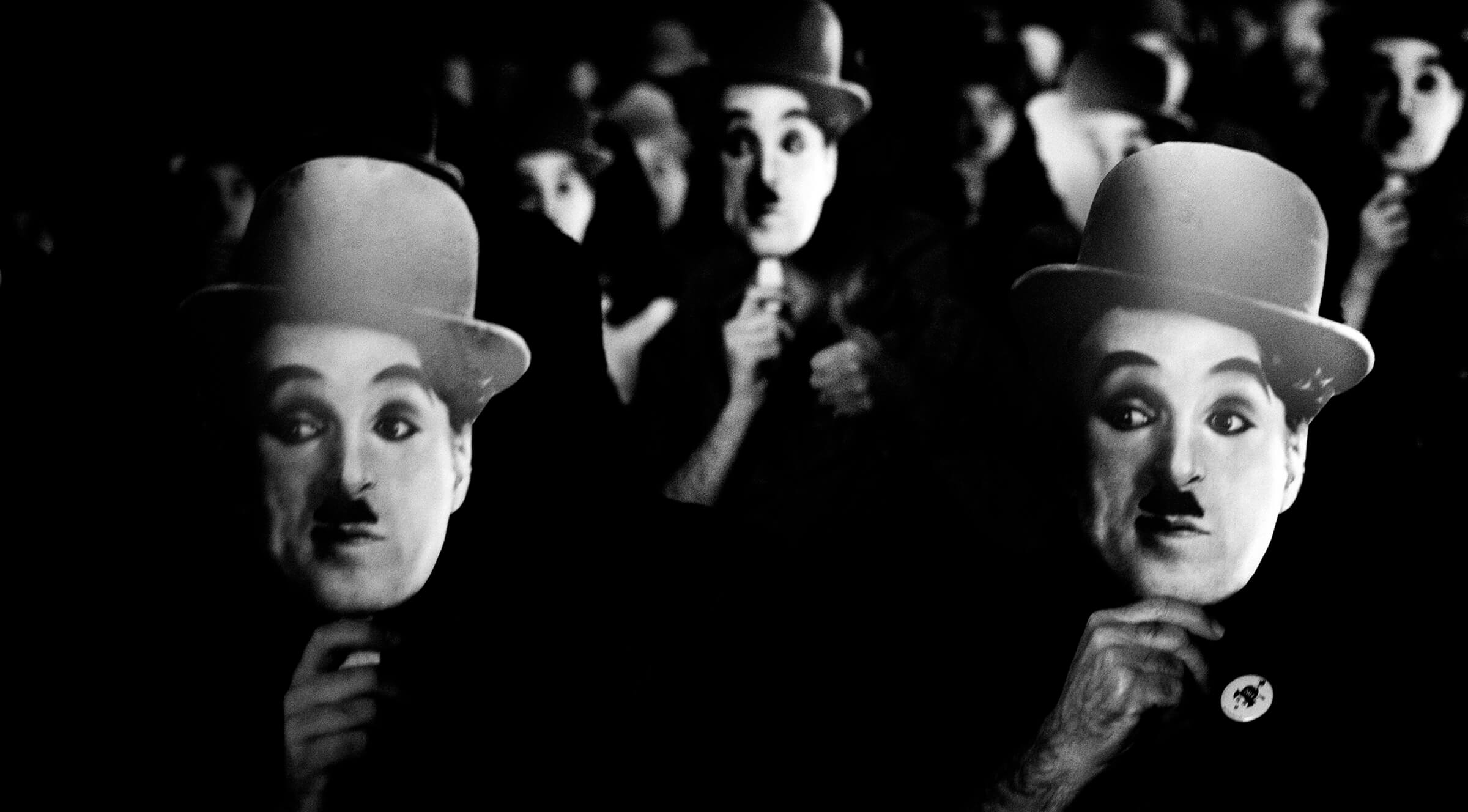On Saturday, January 11, 2014 the beautiful Castro Theatre was the site of our celebration of the 100th Anniversary of Charlie Chaplin’s Little Tramp Character.
No human being is more responsible for cinema’s ascendance as the dominant form of art and entertainment in the 20th century than Charles Chaplin. Yet, Chaplin’s importance as a historic figure is eclipsed by the universality of his screen creation, the Little Tramp, who became an iconic figure in world cinema and culture. Building on traditions forged in the Italian commedia dell’arte that he learned in the British music halls, Chaplin translated traditional theatrical forms into an emerging medium and changed both cinema and culture in the process. Modern screen comedy began the moment Chaplin donned his derby hat, affixed his toothbrush moustache, and stepped into his impossibly large shoes for the first time.
Cinema audiences first saw the Little Tramp onscreen in Chaplin’s second film, Kid Auto Races at Venice, Cal. (1914). An “event” comedy for the Keystone Film Company, Kid Auto Races at Venice, Cal. reportedly was filmed in 45 minutes to take advantage of a children’s car race at the ocean-side resort of Venice, California. The plot is quite simple: the Tramp makes a nuisance of himself while a camera crew attempts to shoot the event. Although quite primitive, the film is historic not only because it represents the first appearance of the Tramp on film, but also because it manages to record the first audience’s reaction to the character. The audience, of course, is the throng of spectators at the race who begin to notice this peculiar fellow causing trouble with a “camera crew.” At first the audience does not know what to make of the Tramp, then they begin to smile, then titter, and then laugh at his antics. In those brief moments of discovery, recorded for posterity, a comedic revolution was born.
The genius of the Little Tramp character is that he is so human and familiar—he is one of us. It is remarkable that Chaplin invented him spontaneously on the set one day in 1914. When pioneering comedy producer Mack Sennett directed his new actor to find something funny to wear, Chaplin chose the outfit that became a symbol of downtrodden yet resilient humanity. —Jeffrey Vance
Special thanks to Jeffrey Vance who wrote our program notes and whose wonderful introductions to The Kid and The Gold Rush enhanced the programs; to maestro Timothy Brock who came all the way from Italy to conduct his restored scores; to Benjamin Simon and the San Francisco Chamber Orchestra who breathed life into Chaplin’s music; to pianist Jon Mirsalis who brilliantly accompanied Chaplin’s short comedies (The Vagabond, Easy Street, The Cure, and Kid Auto Races at Venice, Cal.; to Stephen Salmons who officiated the Chaplin Look-alike contest; to all of the Look-alike contestants (you were ALL super Little Tramps!) and especially to our Look-alike winners, Arlo, Rocco, and Susan.
And a special thanks to our amazing audience—the best in the world.
Image credit: Pamela Gentile

